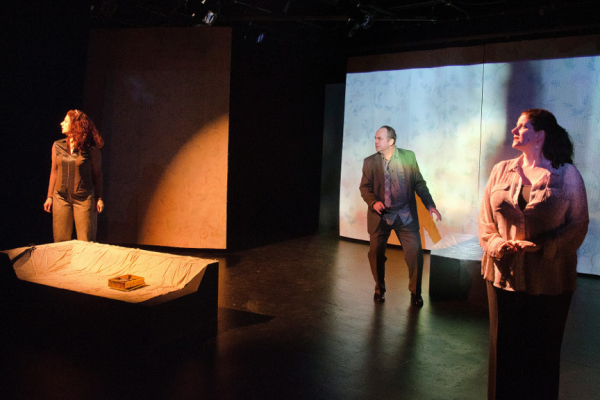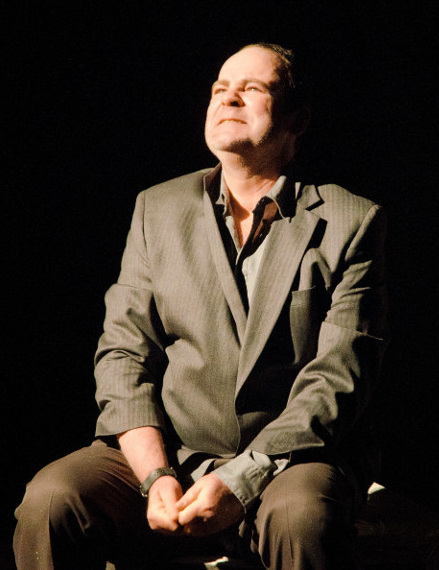Alone in Triptych

(© Stefan Hagen)
In Renee Philippi's Alone in Triptych, directed by Philippi and Eric Nightengale at HERE, three isolated characters tell their stories in a shared dreamlike landscape of suffering. It's a haunting idea with much potential behind it, but where the play might have plumbed the depths of one or two narratives to great effect, in 75 minutes it gives us three partially realized characters and a morally fraught ending.
Clingy Leeann (Vera Beren) lives in New Jersey and takes pride in her relationship with her boyfriend because it is not the kind of cataclysmic failure that the other women in her family have had. But after her boyfriend leaves her house one day, Leeann discovers that he is wanted by the police for raping an underage girl. Moving on to Bavaria, we meet Lori (Catherine Porter), whose low self-esteem is evidenced in her inability to leave her abusive cop husband once and for all. Then in the U.K. we witness Remi (Michael Tomlinson) kidnapping his friend's daughter in order to protect her from the world's evil.

(© Stefan Hagen)
These main plot points in the individual stories all deal with the anguish caused in some way by rape and physical abuse. Over the course of the play, the stories begin to explore the lost souls who seem to attract destructive people into their lives because they have not broken the cycles of self-loathing brought on by their pasts.
Delving deeply into these challenging, psychologically complex themes within the three stories that comprise Alone in Triptych is too challenging a storytelling feat for a play of this length. We're not allowed to see deeply enough into the characters and their situations to prevent them from feeling one-dimensional and unconvincing. We do get glimpses into Lori's history of sexual abuse, perhaps the most developed and interesting character — but what about Leeann's past? At the play's beginning she speaks of family while showing us photos, but her own history is left mostly to shadows. Remi, who chains a 12-year-old girl in a cave, goes on at length about the evil of the world and briefly about his own abuse, but his act of kidnapping feels like drama for drama's sake. What really drives a man to kidnap a child and hold her prisoner for days in a cave? The play gives us no convincing insight into this man.
Beren, Porter, and Tomlinson have the difficult task of telling their stories by speaking to unseen interlocutors (Leeann's boyfriend, Lori's husband, the kidnapped child) rather than addressing the audience. This method of delivery creates distracting pauses that might have been filled with further insight into the characters. For their part, the trio ably tackles this challenge, but you can't help wishing that each were instead delivering an interior monologue to reveal more intimate details about his or her character's psyche.
Carlo Adinolfi's scenic design, which comprises several large panels (a triptych reference perhaps) that move dramatically back and forth at various times, contributes to the production's dreamlike effect but distracts from what should be the play's sole focus: its characters.
Alone in Triptych promises emotional liberation for at least one of its tortured souls in the final image of a flying bird projected onto one of the panels (the same image that opens the play), with the bird appearing to be a message of freedom and hope. But it's unclear what ultimately happens to anyone here. Though Leeann does seem to free herself of her boyfriend through an unnecessarily violent act, the fraught conclusion is one of the play's notable trouble spots.
Alone in Triptych has an interesting metaphor at its core: three lives juxtaposed like the three panels of a triptych. But it might have benefited from focusing on only one or two.











